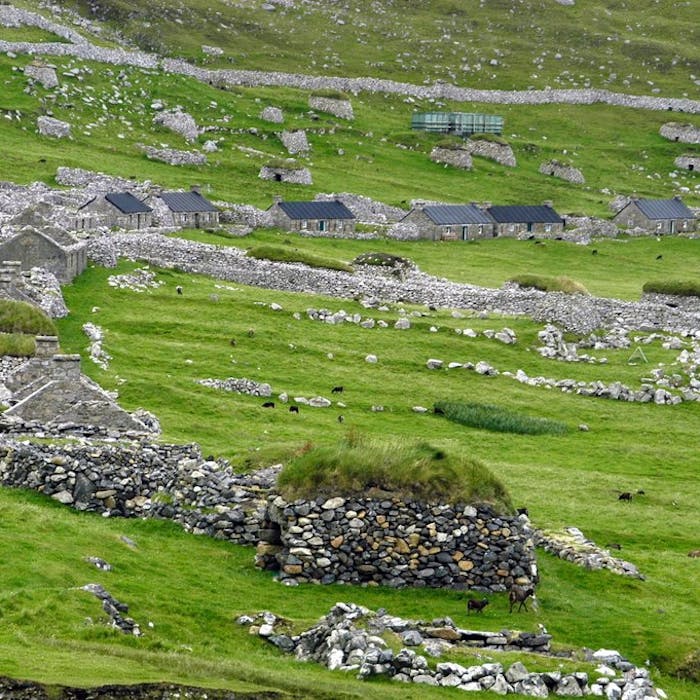
The abandoned homes of St Kilda
The now-ruined village on the island of Hirta, St Kilda, was once the base for a thriving community. It was abandoned in 1930, when more than 2,000 years of human habitation of these remote islands came to an end.
St Kilda is a small North Atlantic archipelago of four islands 40 miles west of its nearest neighbours in the Outer Hebrides in Scotland. Beyond St Kilda, the next land westward is Labrador, Canada. Hirta Island is the largest of the islands, although still tiny with just 9.3 miles (15 km) of coastline and a total area of less than 2.5 square miles.
People used small boats to move between the islands and used the surplus of seabirds to their advantage. The islanders were famed for their ability to gather birds' eggs from sheer cliff faces. Islanders made bait from puffins and lamp oil from fulmars. They made sewing thread from feathers, and shoes from gannets.
However, the early 20th century saw a gradual erosion of the islanders’ traditional ways of life, which also included sheep farming, weaving, and fishing.
Steam ships of tweed-buying tourists introduced the Gaelic-speaking islanders not only to the cultural influences of the rest of the U.K., but also previously absent diseases. Many young islanders emigrated, particularly to Melbourne, Australia, where they founded the suburb of St Kilda. A generation of young men were lost in the trenches of World War I. After the war, the population continued to fall rapidly - with only 36 inhabitants by 1928.
In 1930, following the death of a young woman from appendicitis and pneumonia—which might not have proven fatal on the mainland—the remaining islanders heavy-heartedly requested to be permanently evacuated to the mainland.
The evacuation took place on August 29th that same year, when a ship called Harebell took the remaining villagers to their new homes in mainland Scotland. The villagers left behind a plate of oats and an open Bible in each cottage before boarding the ship. The last former resident of St Kilda, who was evacuated when she was eight years old, died in April 2016.
Today, the islands are a double UNESCO World Heritage Site, for both cultural and ecological reasons due to their human history and globally significant bird colonies. The islands are owned by the National Trust for Scotland. There is also a small military installation; a population of Soay sheep, a Neolithic breed that has continued to thrive on the isolated islands; and a population of Boreray sheep, the U.K.’s rarest breed of sheep.
Further reading
Links to external websites are not maintained by Bite Sized Britain. They are provided to give users access to additional information. Bite Sized Britain is not responsible for the content of these external websites.
